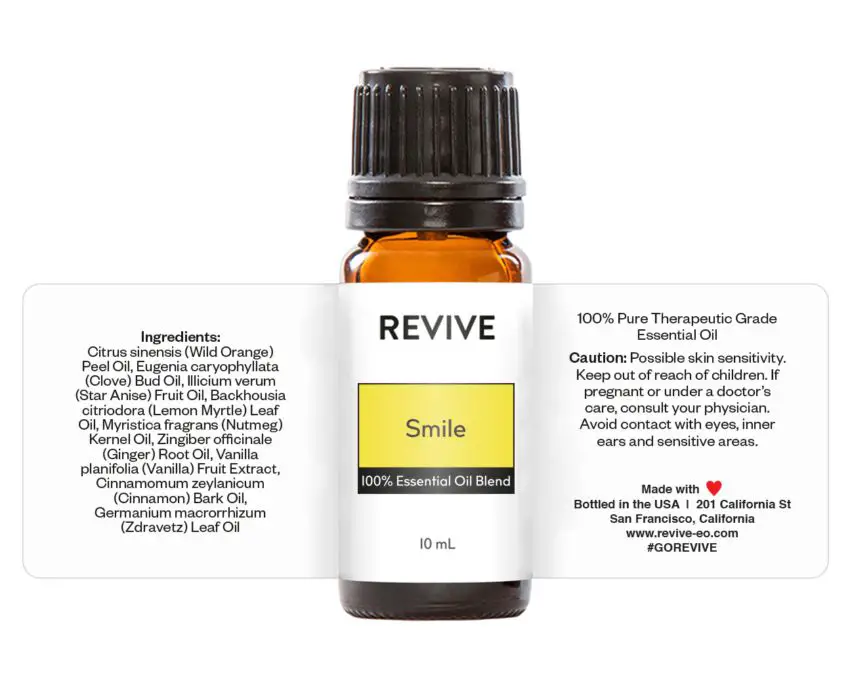Is There An Essential Oil That Smells Like Cinnamon?
Introducing Cinnamon-Scented Essential Oils
Essential oils are concentrated extracts derived from plants that capture the plant’s scent and flavor. They are highly concentrated, so only a small amount is needed to provide fragrance.
The warm, comforting aroma of cinnamon is one of the most popular scents for essential oils. Cinnamon essential oils are in high demand due to their sweet, spicy, vibrant fragrance that evokes feelings of warmth and nostalgia. There are a few key essential oils that authentically capture the true scent of cinnamon.
Three essential oils are commonly used for their true cinnamon aroma – cassia, cinnamon bark, and cinnamon leaf. Each of these oils is distilled from real cinnamon plant materials and possesses the characteristic spicy-sweet cinnamon scent that people know and love. While similar, each oil has its own distinct aroma and properties.
Cassia Essential Oil
Cassia essential oil is derived from the bark, leaves, and twigs of the cassia plant. It has a warm, spicy aroma similar to cinnamon that has made it popular in aromatherapy. Cassia oil contains the chemical compound cinnamaldehyde which gives it its cinnamon-like fragrance and flavor [1].
While cassia oil smells very close to true cinnamon, there are some subtle differences. Both contain high levels of cinnamaldehyde, but cassia has lower levels of coumarin, which gives true cinnamon its classic sweetness. Cassia also has slight undertones of cloves and nutmeg. The aroma is spicier and more pungent than cinnamon [2].
If you’re looking for an essential oil that mimics the scent of cinnamon, cassia oil is one of the closest matches available. Its rich, warm, spicy aroma can be used in aromatherapy, skin care, household cleaning, and more.
[1] https://www.doterra.com/US/en/blog/spotlight-cassia-oil
[2] https://www.youngliving.com/blog/spice-up-your-life-with-5-uses-for-cassia-essential-oil/
Cinnamon Bark Essential Oil
Cinnamon bark essential oil is steam distilled from the inner bark of the Cinnamomum zeylanicum evergreen tree native to Sri Lanka. This type of cinnamon is considered to be “true cinnamon” and is distinct from cassia cinnamon, which comes from a related tree species (source).
Cinnamon bark oil has a warm, spicy, sweet aroma reminiscent of the cinnamon spice used in baking. Its main chemical constituents include cinnamaldehyde, eugenol, and linalool, which give it antiseptic, antioxidant, and anti-inflammatory properties (source).
Compared to cassia oil, cinnamon bark oil contains much lower levels of coumarin, a naturally occurring compound that can be toxic in very high doses. Cinnamon bark oil also has a more refined, delicate scent compared to the harsher, spicier aroma of cassia (source). Its complex aroma makes cinnamon bark oil useful for diffusing and adding a warm, spicy note to aromatherapy blends.
Cinnamon Leaf Essential Oil
Cinnamon leaf essential oil is steam distilled from the leaves of the cinnamon plant. It has a warm, spicy, and sweet aroma that is reminiscent of cinnamon sticks and powder, but more muted than cinnamon bark oil. The main chemical constituent of cinnamon leaf oil is eugenol which makes up 60-80% of the oil. Eugenol gives cinnamon leaf oil its analgesic, anti-inflammatory, antifungal, antiseptic, and antioxidant properties.[1]
Compared to cinnamon bark oil, cinnamon leaf oil has a milder and less harsh scent. It also has a lower concentration of cinnamaldehyde, which gives cinnamon its characteristic spicy aroma. Cinnamon leaf oil is less likely to cause skin irritation than cinnamon bark oil. However, it should still be diluted before application to the skin.[2] Cinnamon leaf oil also has insect-repelling properties and can be used in aromatherapy to promote relaxation.
Comparing the Oils
Cassia, cinnamon bark, and cinnamon leaf oils all come from the cinnamon plant but differ in their aroma and chemical makeup. Here’s a comparison of the three oils:
Cassia oil has the strongest, hottest aroma that is very similar to common cinnamon spice. It contains high levels of cinnamaldehyde, the compound that gives cinnamon its distinctive scent and flavor. Cinnamon bark oil has a very warm, sweet aroma that is subtler than cassia. It has lower cinnamaldehyde content but still smells distinctly cinnamon-like. Cinnamon leaf oil has the mildest scent that is more musky and clove-like than typical cinnamon. It contains very little cinnamaldehyde.
While cassia and cinnamon bark oils can often substitute for each other, cinnamon leaf oil has quite a different aroma profile. All three oils have calming and soothing properties when diffused, but cassia and cinnamon bark are more potent antioxidants. Cinnamon leaf oil is less irritating than the others and often used for skin applications. When blended, they can provide a more complex, well-rounded cinnamon aroma.
Blending The Oils
When blending cinnamon essential oils, it’s best to start with small amounts and adjust to taste. Cinnamon oil has a very strong, spicy aroma that can easily overpower other oils. Good oils to blend with cinnamon include:
Citrus oils like bergamot, lemon, and orange which help brighten and lift the scent. Citrus pairs well with cinnamon’s warm, spicy aroma.
Minty oils like peppermint and eucalyptus which provide an invigorating cooling effect.
Woody oils like cedarwood, clove, and rosemary which complement cinnamon’s earthiness.
Some example cinnamon blend recipes include:
- 2 drops cinnamon, 3 drops clove, 3 drops lemon – a warm, spicy blend
- 2 drops cinnamon, 2 drops bergamot, 1 drop peppermint – an energizing scent
- 3 drops cinnamon, 2 drops orange, 2 drops rosemary – a sweet, herbal aroma
Experiment with different oil combinations and amounts to create custom cinnamon blends you enjoy.
Safety and Precautions
While cinnamon essential oils have many benefits, they should be used with proper precautions to ensure safe usage. Always dilute cinnamon oils before applying to skin, as they can cause irritation and sensitivity reactions when used undiluted [1]. A dilution ratio of 0.5-1% is recommended, which is about 3-6 drops of cinnamon oil per ounce of carrier oil like coconut or jojoba [2].

Do not ingest cinnamon oils, as they can be toxic when swallowed. Avoid contact with eyes and mucous membranes. Always conduct a patch test on a small area of skin before wider application to check for allergic reactions or sensitivity [3]. Keep oils away from children and pets. Use caution when diffusing around pregnant women or those with respiratory issues.
Always store cinnamon oils in a cool, dark place in tightly sealed containers. Use proper ventilation when diffusing the oils. Follow all usage and safety guidelines provided on the oil labels and consult a doctor before use if you have any medical concerns.
Purchasing Cinnamon Oils
When purchasing cinnamon essential oils, it’s important to choose a high-quality, pure oil from a reputable brand. Many grocery stores and online retailers sell cinnamon oils, but not all are created equal when it comes to purity and potency.
Some top recommended brands for purchasing cinnamon essential oils include Eden’s Garden, Plant Therapy, and doTERRA. These companies source organic cinnamon bark or leaves for steam distillation and rigorously test oils for contaminants. Their oils are 100% pure cinnamon without any fillers or additives.
You can often find these premium cinnamon oil brands online through the company’s website or large retailers like Amazon and Walmart. Always check reviews and product details to ensure you’re getting a pure, therapeutic-grade cinnamon essential oil.
Some grocery stores may carry cinnamon oils in their natural health section, but these are typically not the highest quality. For the best experience with cinnamon oil uses and benefits, seek out a reputable aromatherapy brand. This ensures you get the truest cinnamon scent and maximum potency from the oil.
Using Cinnamon Oils
Here are some popular ways to use cinnamon essential oils:
- Add a few drops to an unscented lotion or carrier oil and apply topically to moisturize skin. Cinnamon oil has antioxidant and antimicrobial properties that can benefit skin health (source).
- Diffuse 5 drops cinnamon oil with other spices like clove and orange to fill your home with a cozy, spiced aroma. Inhaling cinnamon oil can energize and uplift mood (source).
- Add 2 drops each cinnamon, wild orange, and peppermint oil to a tablespoon of Castile soap for an energizing hand soap.
- Blend with coconut oil and massage into sore muscles after exercise for a soothing, warming effect.
- Add a drop to oatmeal, smoothies, tea, or baked goods for a delicious flavor boost.
Always dilute cinnamon oil before use and perform a skin patch test before widespread application, as cinnamon oils can cause irritation for some. Enjoy these invigorating oils aromatically or topically in small amounts.
The Scent of Cinnamon
Cinnamon has become one of the most beloved and nostalgic scents, especially during the holiday season. Studies show that cinnamon reigns as the best flavor of the holidays for both kids and adults (https://studyfinds.org/cinnamon-flavor-of-the-holidays/). The scent of cinnamon is often associated with comfort, warmth, family traditions, and childhood memories of holiday baking and decorating. Cinnamon evokes feelings of celebration, togetherness, and nostalgia.
According to research, scents like cinnamon are linked to memories because smell is processed in the brain’s limbic system, where emotions and memories are also processed. The scent of cinnamon brings us back to childhood holidays and happy family traditions (https://www.quora.com/What-is-the-reason-people-say-their-favorite-scents-are-vanilla-and-cinnamon). Cinnamon candles, potpourri, baked goods, and decorations tap into these nostalgic associations, making cinnamon a quintessential holiday scent.





